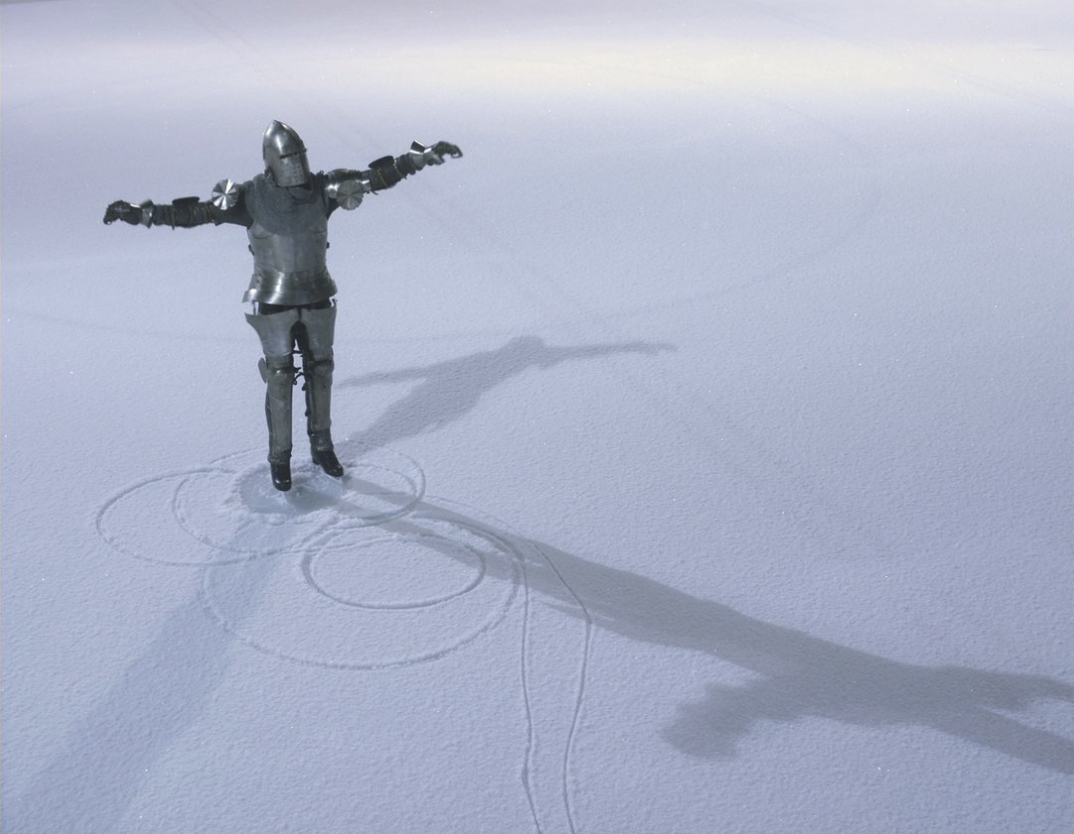Épater le bourgeois… and the audience
By ALBERTO AGUILAR | 8 NOV 2022
As is well known, the Intersección programme is concerned with works whose idea and production take place in an entente between contemporary art and avant-garde film, covering a wide variety of formats —screening, exhibition and performance, among others—, techniques and languages.
Its fifth instalment proposed an approach, thanks to different poetics, to the ecological crisis in which we are immersed. For this reason, the central axis was the section entitled A Fall, a Fracture, a Possibility: under this epigraph the festival questions us about matters such as the ways of living or inhabiting uncertainty, or about what our decisions are when it comes to keeping something or doing without it, or about the possible perspectives that emerge in our collective fall towards that which we don't know, or about whether we can extract another sense of liberation from experiencing the scenario derived from the aforementioned crisis.
There were four monographic sections this year, in which the poetics and trajectory of the Italian collective Flatform, the Portuguese artist Daniel Blaufuks, the Swiss artist and director Pauline Julier, and the Galician artist and filmmaker Blanca Rego were explored. In what follows we will talk about the last two.
Pauline Julier's work explores the connections that humans create with their ecosystem through stories, rituals, knowledge and images. Her pieces are composed of elements of diverse origins (documentary, theoretical, fictional) to restore the complexity of our relationship with the world.
After we attended the screening of Titanic at the Centro Galego de Artes da Imaxe-Filmoteca de Galicia, Julier said that the regular audience at the Grand Théâtre de Genève, the institution that commissioned the piece, during the 2021-2022 season do not understand either the images or the metaphors of this work: they seem oblivious to the piercing vision of a sinking world in which the show goes on.
The proposal by Blanca Rego, an artist influenced by both experimental film and electronic music, reflects on the relationship between image/pixel and sound/noise: in particular, on how to break up both dimensions or vectors and seek their balance as an artistic practice.
Before we discover the films that Rego has selected to show at the Paris cinema, the main venue for the festival, she warns that some of her pieces might make us uncomfortable, given the use of intermittent and stroboscopic lights as well as the sound tracks used: her words anticipate, then, how the artist might impact on her audience.
Both creators propose to build complicities with the audience. The delicate artistic parameters that Julier threads together to translate the anxiety of our times do not manage to shock or stun those who take part in a lyrical performance. This is not the case, on the contrary, for those who are absent and nor for those who are applied and seek sensory accommodation in the face of Rego's intelligent and exhausting continuum of images to be heard and sounds to be looked at.
Perhaps the precious poetics of the former is no longer enough for the audience to recognise the weight and significance of the ecological crisis of our time and relate to it. Although it does not deliberately explore the aforementioned stage of current alarm, perhaps it should be said, however, that the artistic display of the latter: the complaint or the tearing that the medium produces, speaks to us both of a fracture in our way of perceiving the collapse of the surrounding reality and of a extinct possibility of becoming emotional and collectively acquiring awareness of a fall: elements of the meridian certainty in our days.


